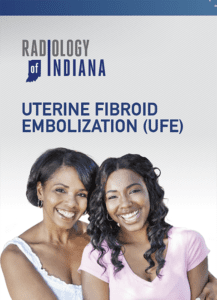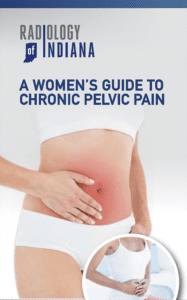Better
Options
Faster
Results
Who Could Benefit from Uterine Fibroid Embolization – UFE?
Women who are symptomatic and have imaging, usually ultrasound, that show fibroids. Magnetic Resonance Imaging( MRI) is used to determine if an Interventional Radiologist can embolize the fibroid. It also helps your doctor determine if there is another cause for symptoms. The MRI allows the Interventional Radiologist to enhance the level of patient care through better diagnosis, better education, better treatment options and better outcomes.
What Are Fibroids, and How Common Are They?
They are benign growths that occur in the uterus and can range from a quarter of an inch up to the size of a cantaloupe. 30% of women can have them and are even more common in African American women. They are the most frequent indication for hysterectomy and therefore a major public health issue.
Common Symptoms:
- Heavy periods
- Pelvic pain
- Bladder pressure causing frequent urination
- Constipation
- Abdominal bloating or distension
Fibroids Affect Around 30% of Women. They Do NOT Automatically Require Hysterectomy.
“The fact that fibroids affect a fifth of the female population is serious. The impact of fibroids on women’s lives is serious too, ranging from frequent inconvenience through to severe pain. The good news is that these symptoms do not have to be endured and do not have to be treated by a hysterectomy.

“We are delighted to offer this alternative to suitable patients. And we carry it out with great success.”
“Hysterectomy is a major surgical operation with an extended recovery time. UFE is a major advancement in women’s health. It’s performed by a specially trained physician, done in the hospital. It is done with sedation, not general anesthesia and the patient doesn’t experience any significant pain.”
What Are the Next Steps?
Let’s set up an appointment to see what might be possible. Our Radiology of Indiana Interventional Radiologists are national experts in this treatment and in fact performed the first patients in Indiana over 16 years ago. We continue to perform the largest number of UFE procedures in Indiana. Our experience matters, and you can schedule an appointment direclty with us, without a referral, if you prefer.
What Does Successful Fibroid Treatment With UFE Look Like?
- 85% to 90% of women have significant or total relief of their symptoms
- Effectively treats multiple fibroids and large fibroids
- Regrowth of fibroids is rare
Frequently Asked Questions
What are Uterine Fibroids?
Many women experience heavy menstrual periods or cramps from time to time. But it isn’t normal if heavy periods impact how you live your daily life, or you experience constant pelvic pain. If you are having these symptoms, you should see a doctor.
Women who experience pelvic pain or heavy menstrual bleeding may have a common, non-cancerous growth(s) in the uterine wall called a uterine fibroid.
Uterine fibroids are common non-cancerous (benign) growths that develop in the uterus. They can range in size from very tiny (a quarter of an inch) to larger than a cantaloupe. Sometimes fibroids can cause the uterus to grow, similar to during pregnancy. In many cases, more than one fibroid may be found in the uterus.
Will my insurance cover the procedure?
UFE is covered by all major insurance companies for the treatment of symptomatic fibroids. It is not an experimental procedure and the particles used for embolization are FDA approved for the treatment of vascular tumors. Recently, the FDA approved Embospheres specifically for use in the treatment of uterine fibroids.
It is always helpful to contact your insurance company for particular details about coverage/eligibility and to determine if pre-certification/ preauthorization is necessary.
How long does the procedure take and how long will I be in the hospital?
UFE typically takes about an hour. All patients stay overnight in the hospital (23 hr outpatient stay).



